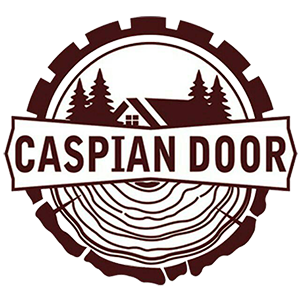 : MDF History
: MDF History
The fiberboard industry is one of the relatively new industries in the wood industry, so that the fiber board was first developed as a subsidiary of the paper industry, the first MDF factory was built in 1965 in the city of Deposite , New York, which developed its product Branded “Barabourt”. After that, it became much widespread due to the industry’s development in using wood wastes
Definition of MDF
The abbreviation for “Medium-density fiber_board ” is considered as a wooden product . Antifreeze is a type of fiber board produced by dry method. Its density is between 650 and 800 kilograms per cubic meter
Main stages of MDF production
:Paste Preparation
The wood of the trees comes to the factory after being cut in the form of a pollen bin. Initially, the bark skin is removed from the cutter and then converted into chipper in chipper. The raw material may be left in excess of the woody factories and other industries that enter the crushing plant, if necessary, or enter the steam directly
The wood particles produced in the steam boiler are pressurized after a wash step (to clean dust and …) for steaming. At this stage, due to the heat and vapor pressure, the lignin (which holds the same as the fiber cement together with each other) is softened and the solid wood structure collapses.
After this step, steamed particle boards enter the pressurized refinery and, by the pressure and rotation of the refining plates, the fibers are separated from each other. In order to completely isolate the lignin, the fibers are washed and then enter the drying step.
Drying
Relatively wet fibers are introduced into the pre-dryer for initial drying and entering the adhesive area after leaving the refiner. Regardless of whether or not pre-drying is used, indicator tube dryers are used to reduce the moisture content of the fiber to the desired moisture content
In the production of MDF, one-stage or multi-stage tube drying systems are usually used. Most multi-stage pipe dryer systems are connected to a two-stage system. In a multi-stage tubular dryer, a primary tubing dryer with a two-stage tubular dryer in separate rows near a diffusion point, as well as a cyclone, was discovered in the fiber
Moore heat requires tube drying through direct burning of propane, natural gas or distillation oil or direct heat
Adhesion
The sequence of drying and gluing operations depends on the way in which resins and other additives are bonded to the fibers. Urea formaldehyde resins (UF) are the most commonly used adhesives for MDF production. Of course, other resins such as phenol, melamine and isocyanate are also used for this purpose. Some factories injected resins into a short-time glue, and others injected the resin formulation into the nozzle system
If the resin is added to a separate female adhesive, the fibers are first dried, separated by a cyclone recovery from the hot air system and inserted into the adhesive. In the glue, the fiber is impregnated with resin, wax and other additives and then transferred into the dry fiber storage tank. If used with a glue nozzle, the fibers are first embedded with resin, wax and other additives in a nozzle line and then transferred through a duct to the dryer
After drying, the fibers are separated by a cyclone recovery from the hot air system and eventually into the dry storage container
Pressing and producing boards
The adhesive-impregnated fiber is transferred from the dry storage tank to the Forming Machine and then continuously moves on the moving eye system. The continuous cake should be compressed before loading in hot press. After initial compression, some cutting size is taken and the initial size of the waste is returned back to the forging machine. The cake will be transferred to the hot press after compression and initial size. The heat and pressure required for glue reaction through the press are bonded and the fibers are bonded to form the panel
The pressing of the fiber cake may take place in a continuous press, or the pre-pressed cake is first cut by separate cutting cassettes and then pressed in multi-class presses and eventually pressed continuously in hot presses. Heat presses in MDF mills are usually supplied by steam or hot oil
After pressing, the boards are cooled, after grinding, size is cut and the head is cut to the desired size. The produced boards can be painted or covered with melamine coatings and ultimately the final product is packaged for delivery to the place of use
MDF can be coated after production. Decorative coatings, in addition to its beauty, will last for long periods of time and can be used in environments such as kitchens. The melamine cladding is the most common type of veneer lacquer in which the bonded paper process is applied to the adhesive with press and heat press on the board
Some of the features that make up various applications include
High physical and mechanical properties
The wide range of density (density = specific gravity), the thickness and dimensions of the produced material
Instrumentation, machining and sanding capabilities
Smooth and dense surfaces
Shape-ability and smooth edges
The lack of wood defects
Uniform and homogeneous density profile
Possibility to carry out different pavements, such as wooden and non-woven carpets, staining and so on
Dimensional stability and compression resistance
Appearance, mild and elegant nature and wood-like scenarios
The price is right


 فارسی
فارسی Русский
Русский العربية
العربية